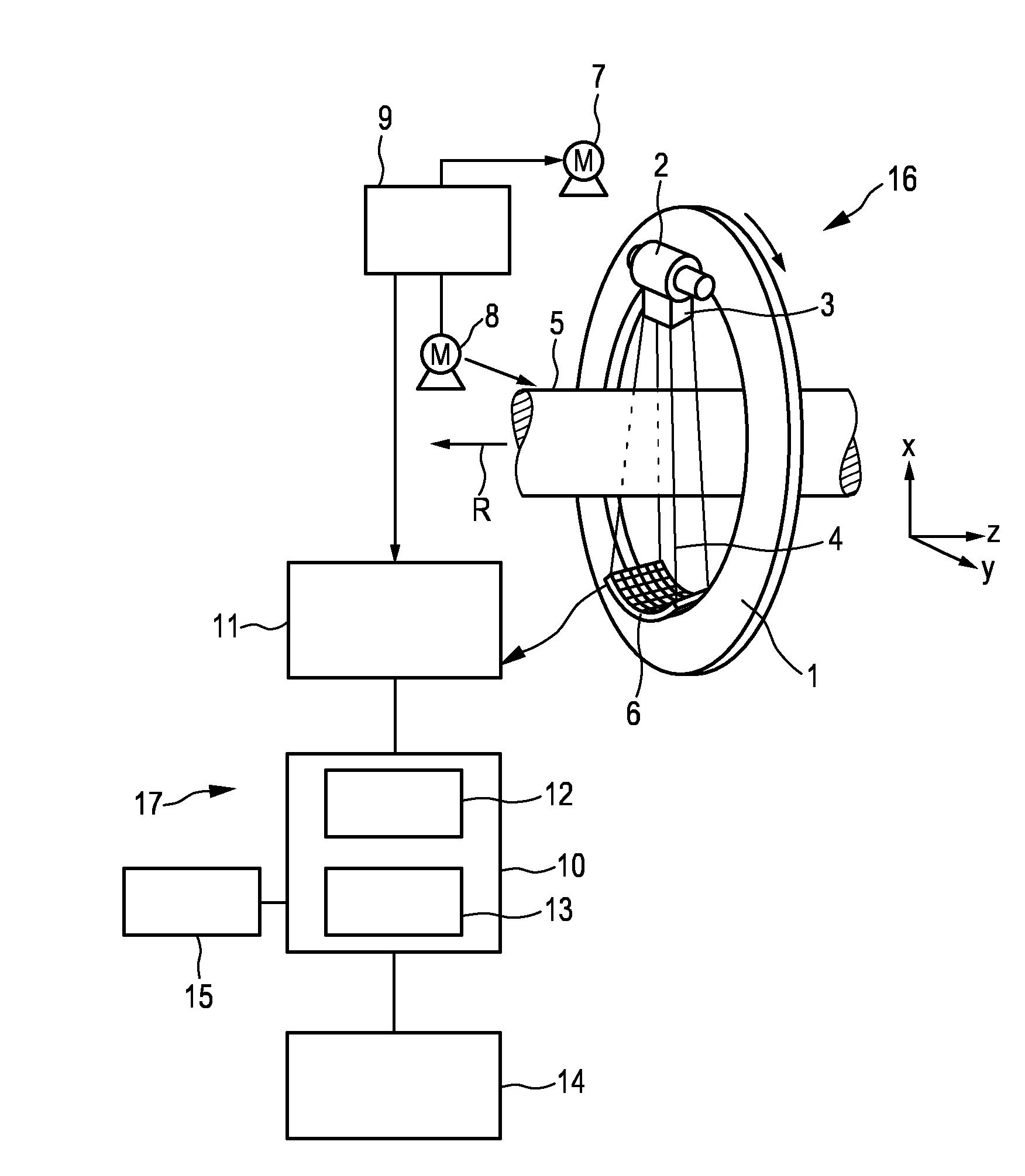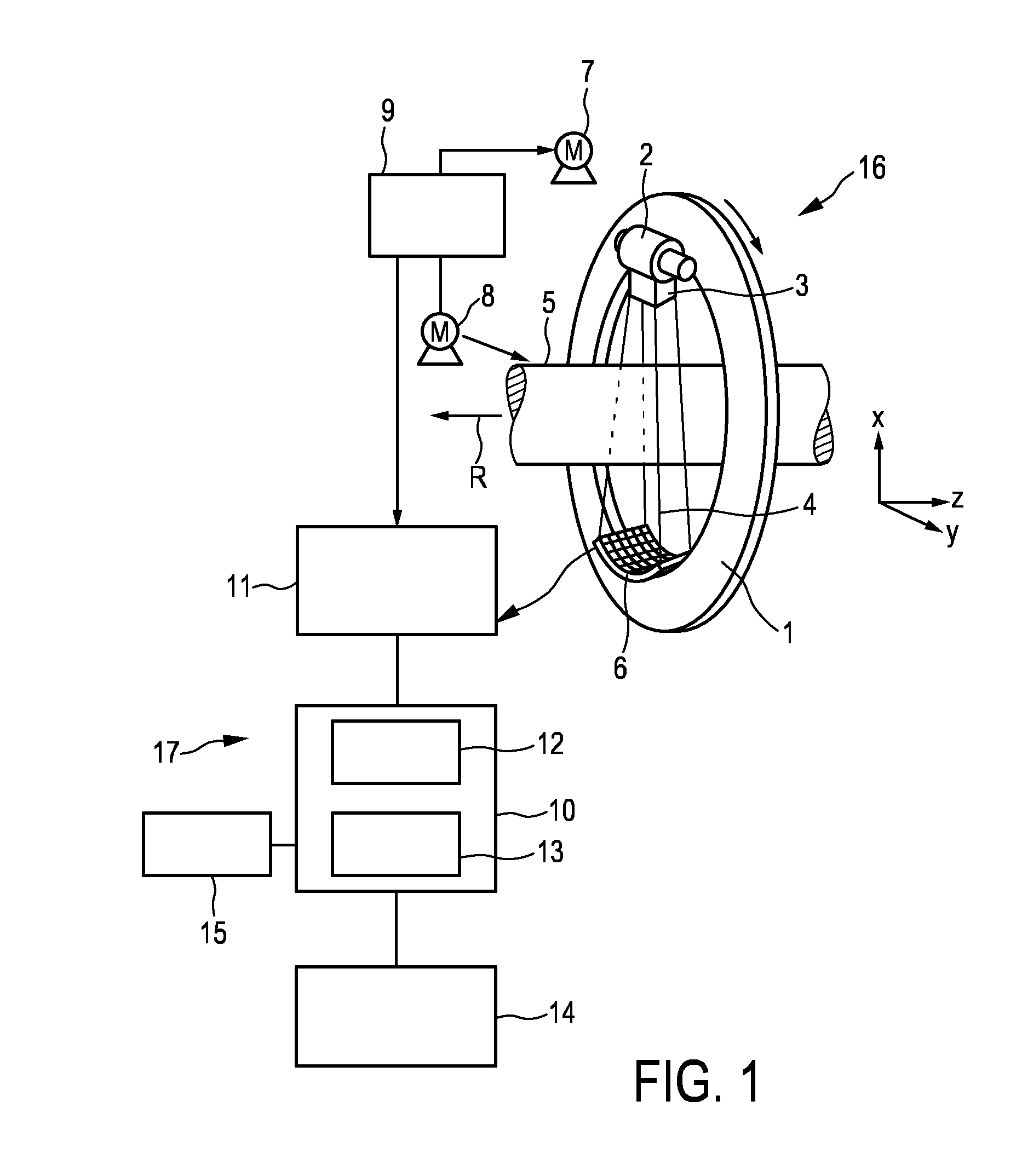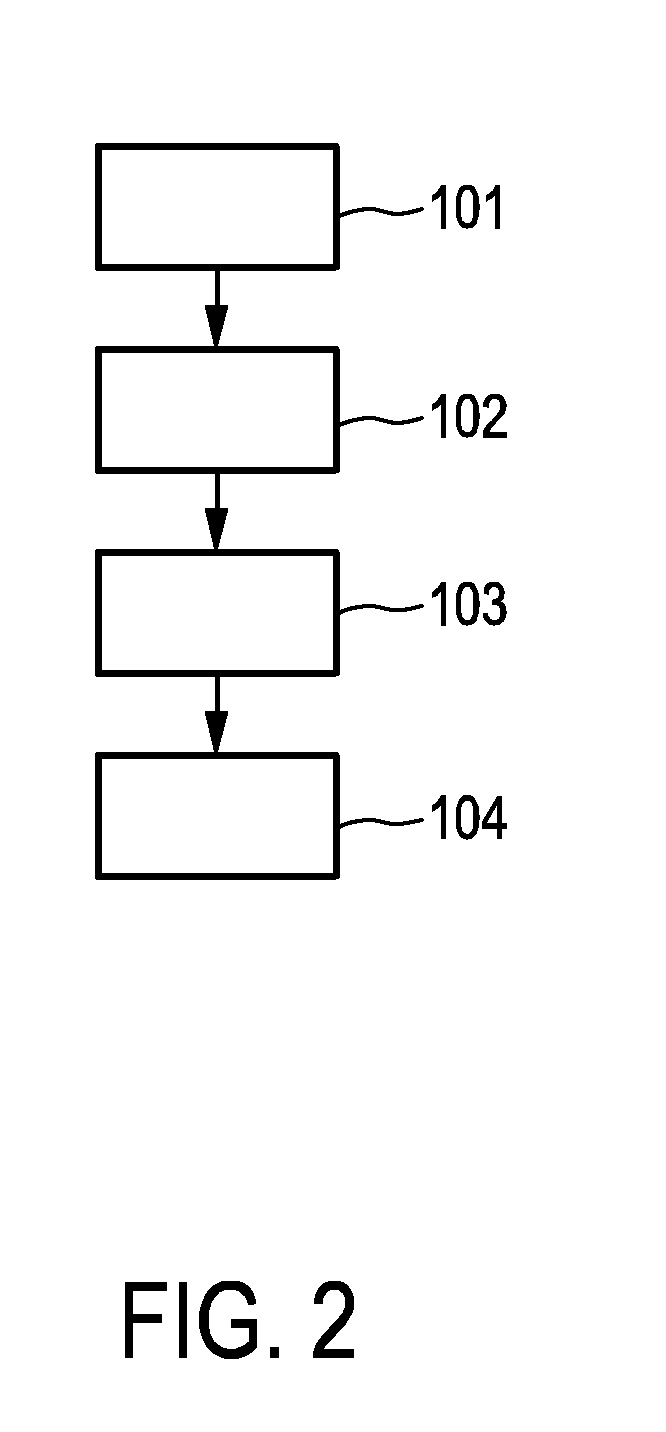Image generation apparatus
a technology of image generation and apparatus, applied in image enhancement, tomography, instruments, etc., can solve the problems of undesirable appearance and general unwoidness of relative noise image, and achieve the effect of improving noise appearan
- Summary
- Abstract
- Description
- Claims
- Application Information
AI Technical Summary
Benefits of technology
Problems solved by technology
Method used
Image
Examples
Embodiment Construction
[0027]FIG. 1 shows schematically and exemplarily an embodiment of an image generation apparatus for generating an image of an object. In this embodiment, the image generation apparatus is a computed tomography apparatus. The computed tomography apparatus 17 includes a gantry 1 which is capable of rotation about a rotational axis R which extends parallel to a z direction. A radiation source 2, which is, in this embodiment, an x-ray tube, is mounted on the gantry 1. The radiation source 2 is provided with a collimator 3, which forms, in this embodiment, a conical radiation beam 4 from the radiation generated by the radiation source 2. The radiation traverses an object (not shown), such as a patient, in an examination zone 5 which is, in this embodiment, cylindrical. After having traversed the examination zone 5 the radiation beam 4 is incident on a detection device 6, which comprises a two-dimensional detection surface. The detection device 6 is mounted on the gantry 1.
[0028]The compu...
PUM
 Login to View More
Login to View More Abstract
Description
Claims
Application Information
 Login to View More
Login to View More - R&D
- Intellectual Property
- Life Sciences
- Materials
- Tech Scout
- Unparalleled Data Quality
- Higher Quality Content
- 60% Fewer Hallucinations
Browse by: Latest US Patents, China's latest patents, Technical Efficacy Thesaurus, Application Domain, Technology Topic, Popular Technical Reports.
© 2025 PatSnap. All rights reserved.Legal|Privacy policy|Modern Slavery Act Transparency Statement|Sitemap|About US| Contact US: help@patsnap.com



